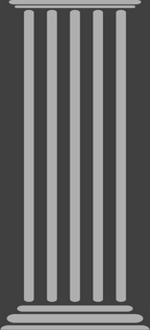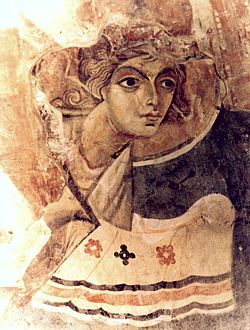|
Magdalina
Mihailova Stancheva was born on 6 September 1924 in Sofia,
Bulgaria. She completed her secondary education at First
Girls' High School in Sofia and the enrolled at the
University of Sofia "St. Kliment Ohridski". During her
schooling, she participated in rescue archaeology projects
in the city center of Sofia, which was being rebuilt after
bombings from World War II. She graduated in 1948 with a
degree in classical philology and history.
In 1951, Stancheva was hired to work in the Sofia Municipal
Museum and simultaneously to work on archaeologic projects
of the facility. She proposed that the name be changed to
the Historical Museum of Sofia, now known as the Sofia
Regional Historical Museum, in 1952, and with the name
change, she was hired as the senior curator. The following
year she was appointed as head of the archaeology department
of the museum. As one of the first museologists in the
country, she led the museum's preservation efforts for the
excavations of the Church of St Petka of the Saddlers, the
rotunda of the Church of St. George, the eastern gate of the
Serdica Fortress and many others. She also led excavations
and participated in archaeological surveys of Sofia and
throughout the country.
From the 1950s through the 1970s, Stancheva led the effort
to preserve archaeological sites, through efforts to have
them declared as heritage preservation locations. Working
with the International Council of Museums and UNESCO, she
presented successful candidacies for such projects as the
Boyana Church, the Rila Monastery, and the Thracian Tomb of
Kazanlak to receive recognition as cultural monuments to be
preserved and protected. Writing articles on the history and
archaeology of Sofia, conservation, the conflicts between
the need to urbanize and the need to preserve history,
Stancheva published over 600 titles in various languages
about Bulgarian and Thracian history. She published for the
Bulgarian Academy of Sciences and the Bulgarian Historical
Society in such volumes as Announcements of the
Archaeological Institute", Announcements of the Bulgarian
Historical Society, Archeology (Bulgarian: Археология ISSN
0324-1203), Museums and Monuments of Culture Magazine and
Sofia Magazine, among others.
In the early 1970s, Stancheva was appointed as a Bulgarian
delegate to the International Council of Museums of Paris
and the UNESCO World Cultural Heritage Committee. She served
as vice president on the committee for six years and
broadcast cultural programs on both Radio Sofia and Radio
UNESCO to provide cultural education. She was awarded the
Order of Saints Cyril and Methodius in both grades I and II
for her preservation efforts, as well as being honored with
the National Order Of Labour, Silver Class for her years of
service, among many other awards. In 1985 Stancheva left the
museum and active work as an archaeologist and began working
as a voluntary consultant to the legislature and Ministry of
Culture on legal protections for cultural heritage. She also
taught at Sofia University as well as at the National
Academy of Arts and the New Bulgarian University, training
dozens of museologists from throughout the country.
Stancheva's position on archaeology was founded in
scientific evidence. She participated in two commissions
over the question of whether Vasil Levski's grave had been
found at St. Petka's and maintained the position that
without proof, linking a person or event to a place,
undermined the authority of historians and archaeologists.
Nikolai Khaitov, a popular writer,accused Stancheva of
participating in a conspiracy to prevent investigation into
Levski's burial site and accused her publicly of mishandling
the remains. She flatly denied that there was any attempt to
hide the bones and maintained that when the skeleton labeled
"No. 95" arrived at the museum, it was sent, as all other
bones were, to Petîr Boev at the Archaeological Institute
for examination. As the bones were lost, the commissions
held that no substantive identification could be made.
In 1990, Stancheva designed a Cultural Heritage program for
the New Bulgarian University and taught the courses in the
program until 2004. After she retired from teaching, she
continued researching and published two books, София: От
древността до нови времена (Sofia: From antiquity to new
times, 2009) and Мадарският конник (Madara Horseman, 2013).
She was unanimously designated as an honorary citizen of
Sofia for her life's work in 2010.
Stancheva died on 6 October 2014 in Sofia. Her personal
papers, including books and documents from international
congresses on archaeology and conservation were donated to
the New Bulgarian University Library in 1997. She is known
for having popularized preservation in Sofia and for her. |



